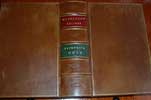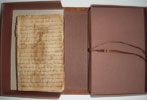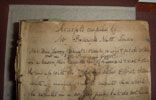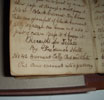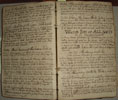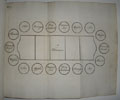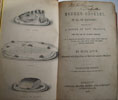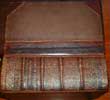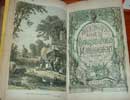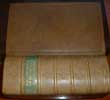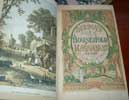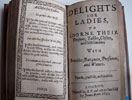The Frugal Housewife.
DEDICATED TO THOSE WHO ARE NOT ASHAMED OF ECONOMY.. BY MRS CHILD, AUTHOR OF THE "MOTHER'S BOOK" THE "LITTLE GIRL'S BOOK" ETC. A fat kitchen maketh a lean will - Franklin. "Economy is a poor man's revenue; extravagance a rich amn's ruin." Ninth Edition. CORRECTED AND ARRANGED BY THE AUTHOR. TO WHICH ARE ADDED, HINTS TO PERSONS OF MODERATE FORTUNE. SOME VALUABLE RECEIPTS. ETC. ETC. LONDON: PRINTED FOR T.T. AND J. TEGG, CHEAPSIDE; N. HAILES, PICADILLY; BOWDREY AND KERBY, OXFORD STREET; ALSO R. GRIFFIN AND CO. GLASGOW. 1832.
FIRST ENGLISH EDITION. 12vo. Yellow paste-downs and end-papers at each end. 1fep. [1] Engraved frontispiece. Title page. [1] 1-172. 173-176 Index. 6 pages of very neat manuscript writing on the feps and paste-down. Original maroon calf boards with bright original gilt lettering "Mrs Child's Frugal Housewife 2s/6d." Sympathetically relaid smooth spine. Internally very clean. An excellent copy.
- This is a lovely and interesting book. The first edition (the Frugal Housewife) was published in America. 1929. Bitting informs us the title was deposited in the District Clerk's Office by David L. Child, the 12th day of November, 1829. Other editions cited by Lincoln are; the 2nd 1830; 4th, 5th, 6th,7th, all 1831; 8th, 1832. Because this edition, the 9th, was published in England, further American editions had the title changed to "The American Frugal Housewife" This new title reached thirty two editions by 1850. Oxford only cites the 15th English edition of 1835. Lownestien; p31, confusingly states that the name of the American edition was changed in 1832 because there was an "English book of the same name" She seems unaware that both the new 'American Frugal Housewife' and the English 'Frugal Housewife' were one and the same, albeit, published in two different countries. The confusion is even more widespread. Michigan State University Libraries have an essay on the 1830 American edition in their 'Historic American Cookbook Project'--'Feeding America' in their Digital Collections that states; "The Frugal Housewife was first published in Boston in 1829 and was reprinted at least four times in the next two years. By the eighth edition of 1832, the name had been changed to The American Frugal Housewife to differentiate it from the English work of Susannah Carter." Yes, Carter did publish a cookery book called 'The Frugal Housewife' but it is a totally different book that was first published sixty four years previously in 1765. Finally, after studying this copy being offered here, against the text of the facsimile copy of The American Frugal Housewife, twenty-ninth edition of 1844, with the introduction by Jan Longone, there is no doubt they are both different editions of the same book. Quite how an American cookery book, barely three years into publication, came to be printed in England, is a mystery on which this compiler would appreciate some clarity. Lowenstien p2, p25, p31.

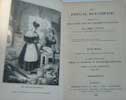
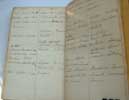
click on image to enlarge

Antiquarian category
ref number:
10907 